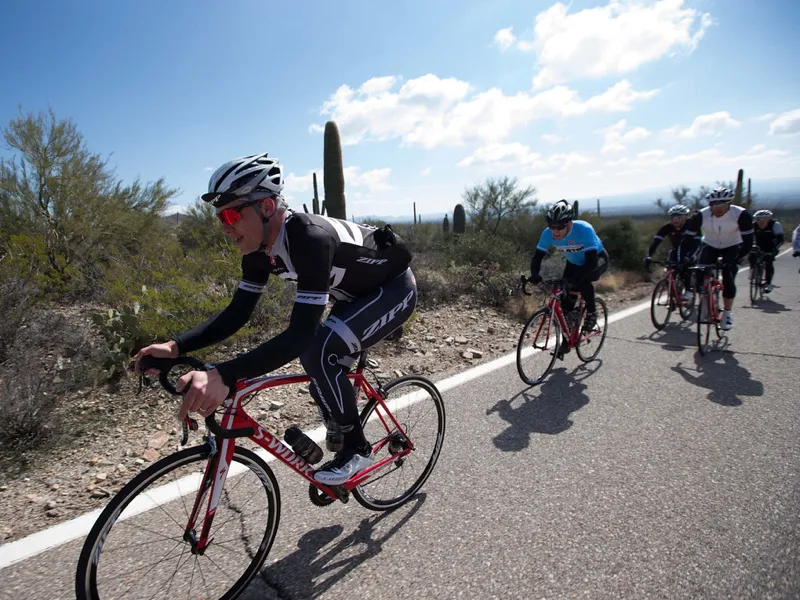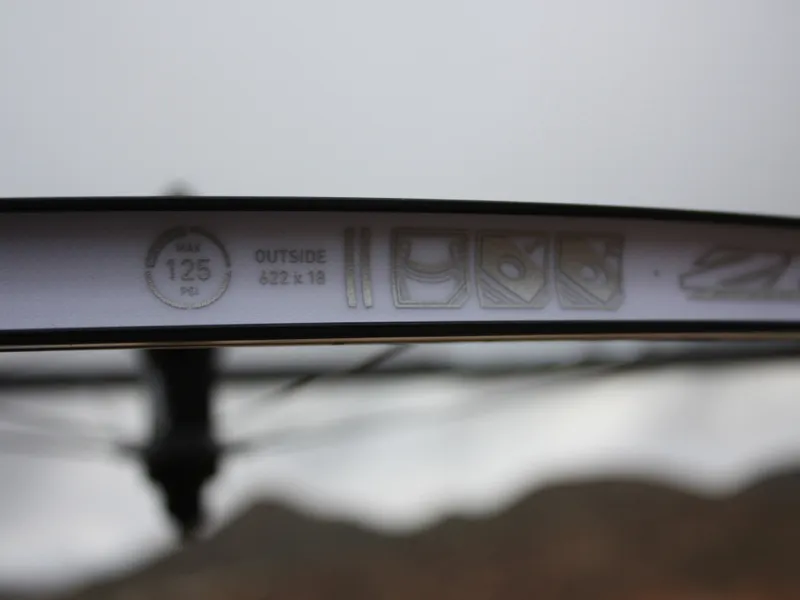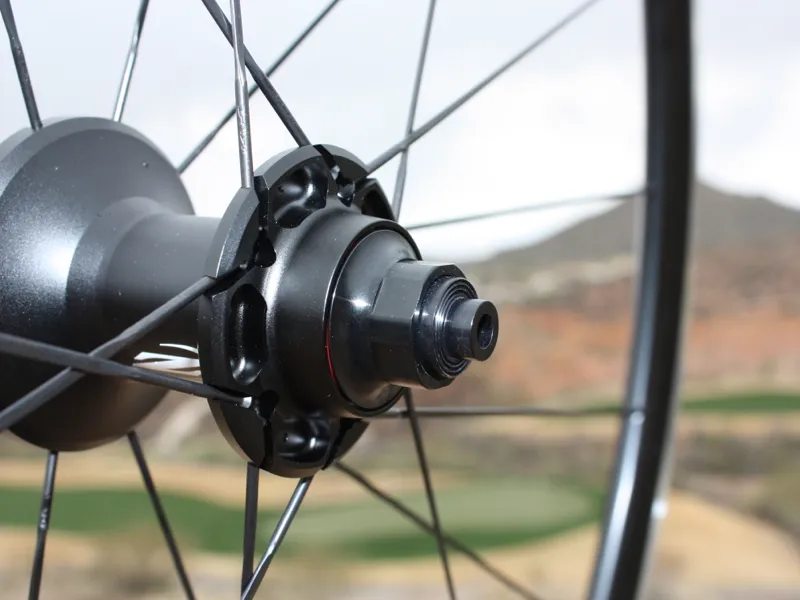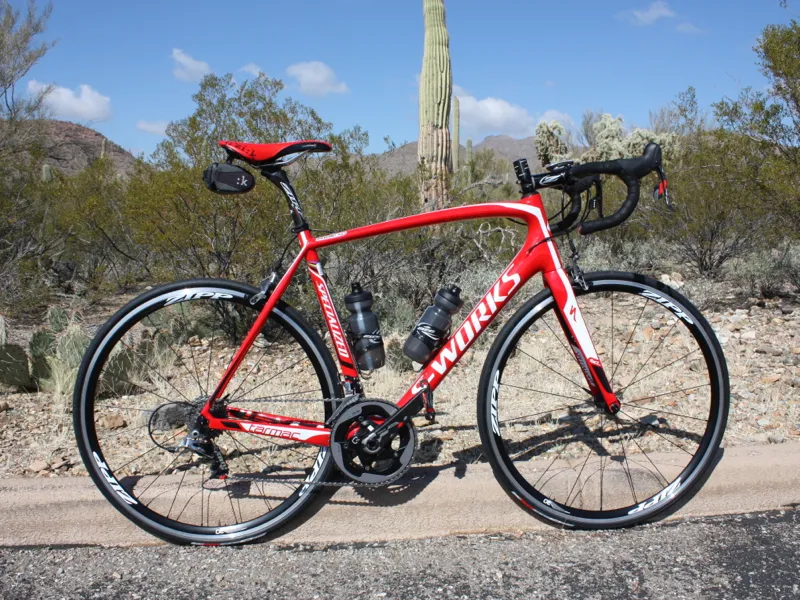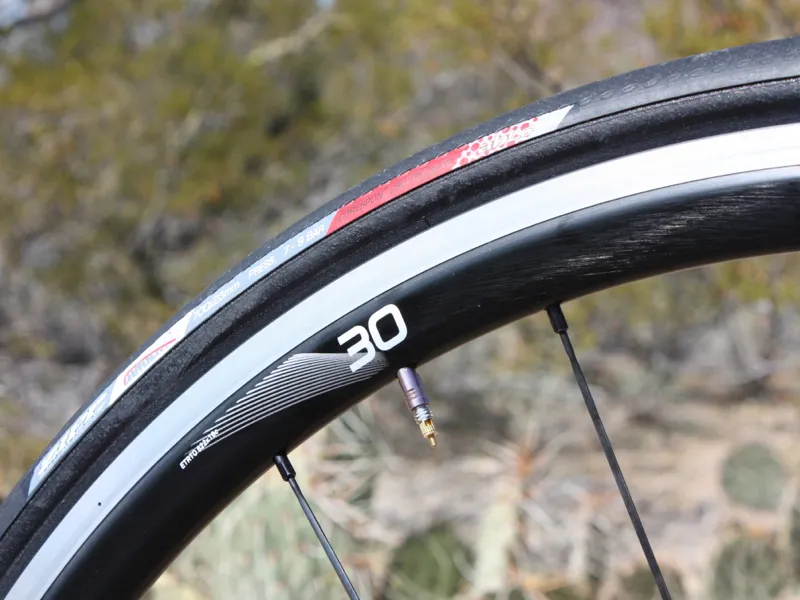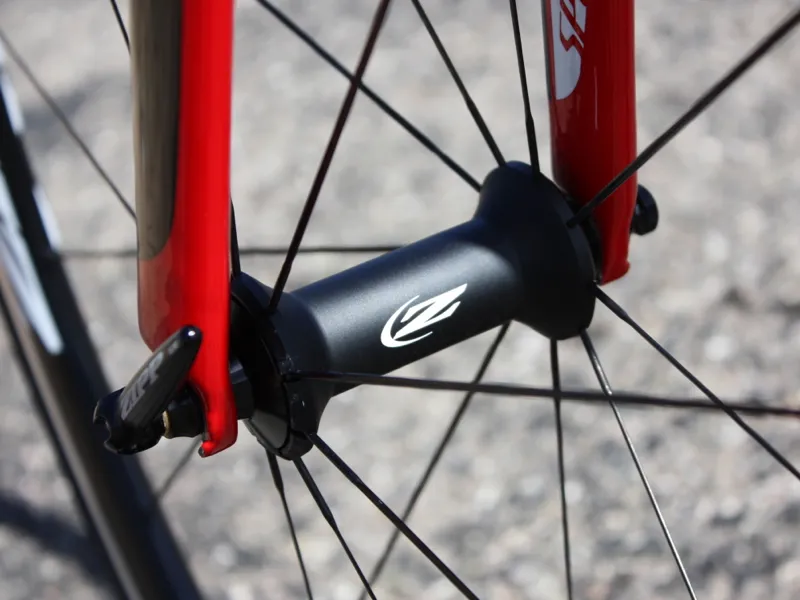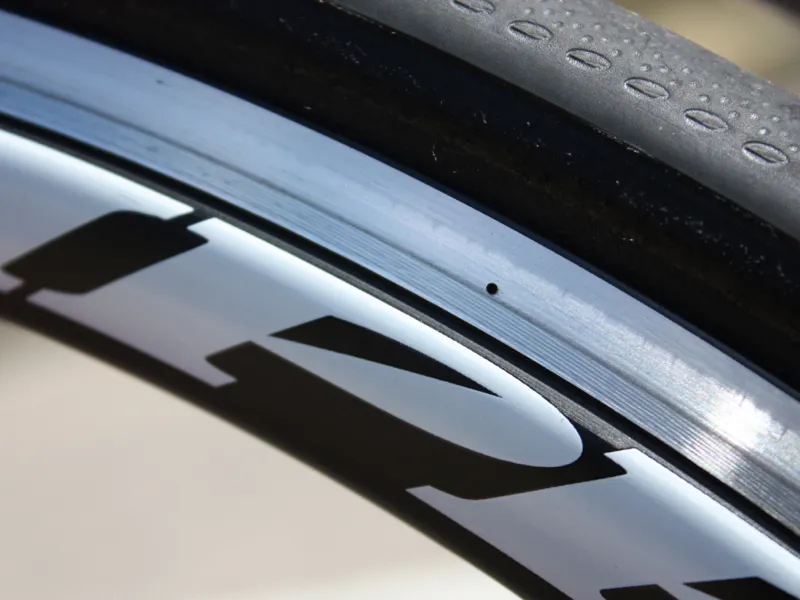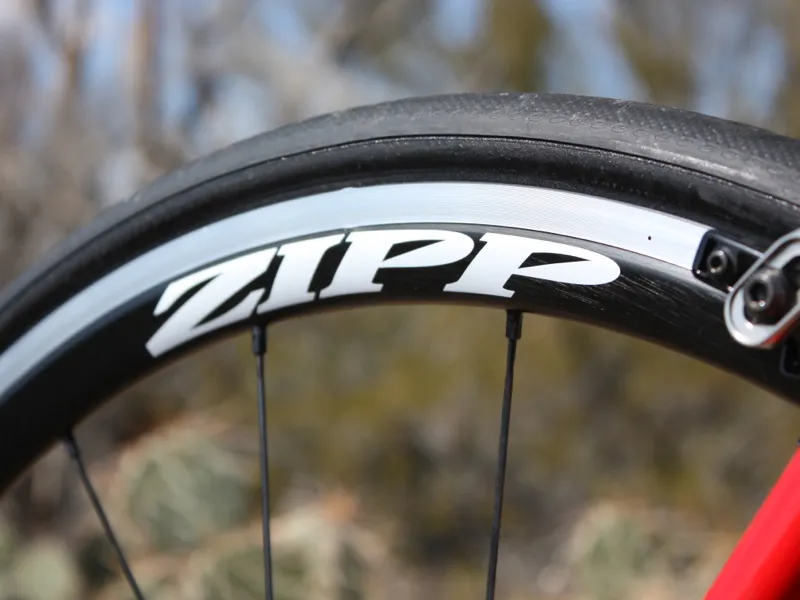Having established its position as a top-end wheel supplier, Zipp is now making an effort to sell more affordable hoops, too. As part of SRAM, Zipp has more cachet on the wheel front than SRAM alone or the now-defunct Flashpoint label. In fact, for 2013 there are no more SRAM-branded road wheels, the 30 and 60 clinchers representing the entry points instead.
We rode the 30s and 60s back to back at Zipp's launch, and while both are touted as aero – this is Zipp, after all – it was difficult to discern any major wind-cheating feel with the 30s.
With a rounded aluminum body and aluminum brake tracks, the Zipp 30s performed like straightforward, everyday road wheels; not hyper-light or lightning-quick to accelerate, but not sluggish tankers. With 18 spokes up front and 20 in the rear, the wheels are stiff enough for racing but not overly harsh.
The wheels feature what Zipp is calling a "hybrid toroidal" rim, meaning that it bulges out behind the tire for enhanced aerodynamics. The 'hybrid' part means Zipp uses less expensive manufacturing methods than with the 101 clinchers, such as parallel brake tracks rather than sloped ones that blend smoothly in with the result of the rim. This might result in slightly inferior aerodynamics and heavier weight, but it also means a much lower price. A pair of 1,655g 30s is US$850/£675; a pair of 1,530g 101s is US$1,325/£855.
Unlike Zipp's top-end wheels, the 30s have non-adjustable hubs with aluminum shells. Maintenance, as it is, consists of replacing the stainless steel cartridge bearings when necessary. Servicing the spokes is straightforward, though, with relatively standard Sapim CX-Ray spokes and external nipples.
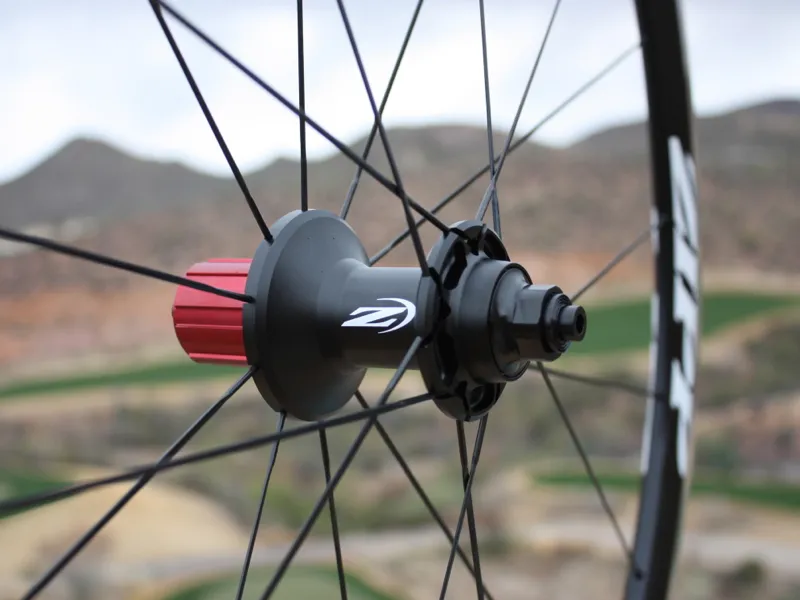
Stainless steel bearings, an aluminum hub shell and no external adjustment
Still, Zipp claims that the 30 outperforms some other brands' taller rims, namely Easton's EC90, in terms of aerodynamics. The claimed gains are bigger at wider yaw angles (up to roughly 60g at a 20-degree angle at an unspecified speed).
But a shorter wheel should be more aero at side angles. We can say that the wheels felt perfectly stable in crosswinds – again, though, it's a relatively short rim; it shouldn't be blown around. Without a wind tunnel, a finite comparison wasn't possible.
What is possible are weight and price comparisons. Shimano's Ultegra wheelset, for example, is a gram lighter (1,654g) and US$200/£129 cheaper. It's also tubeless-ready at US$650/£420 for the pair. Mavic's Ksyrium Elite wheels weigh in at 1,540g for US$674/£435. Neither of these are touted as aero wheels, just solid all-rounders.
The question is, do you find Zipp's label and aero claims worth an extra US$200/£129 over the competition? For us, the jury is still out.
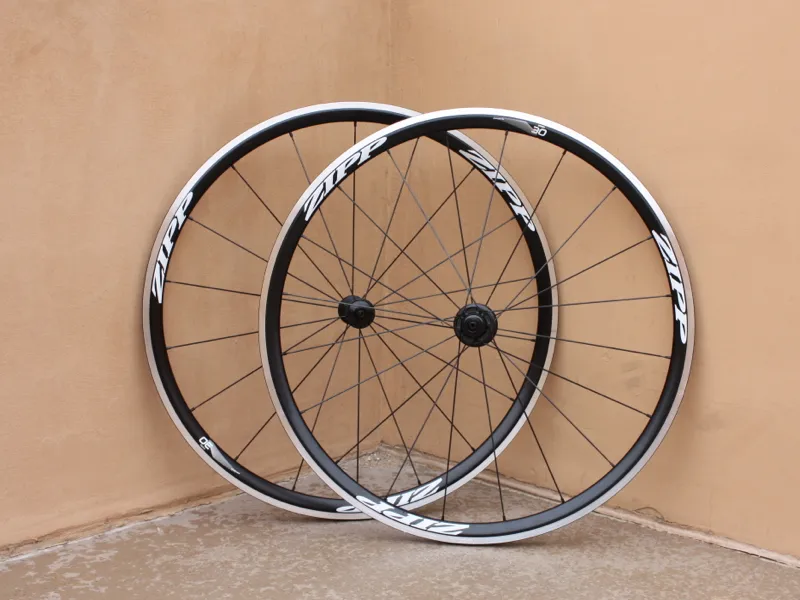
A pair of Zipp 30 wheels weighs 1,655g and costs US$850/£675
The US$390/£305/€360 30 front wheel weighs 765g. The US$460/£370/€425 rear weighs 890g with 20 spokes and is available with a 10- or 11-speed SRAM/Shimano body or a Campagnolo body.
